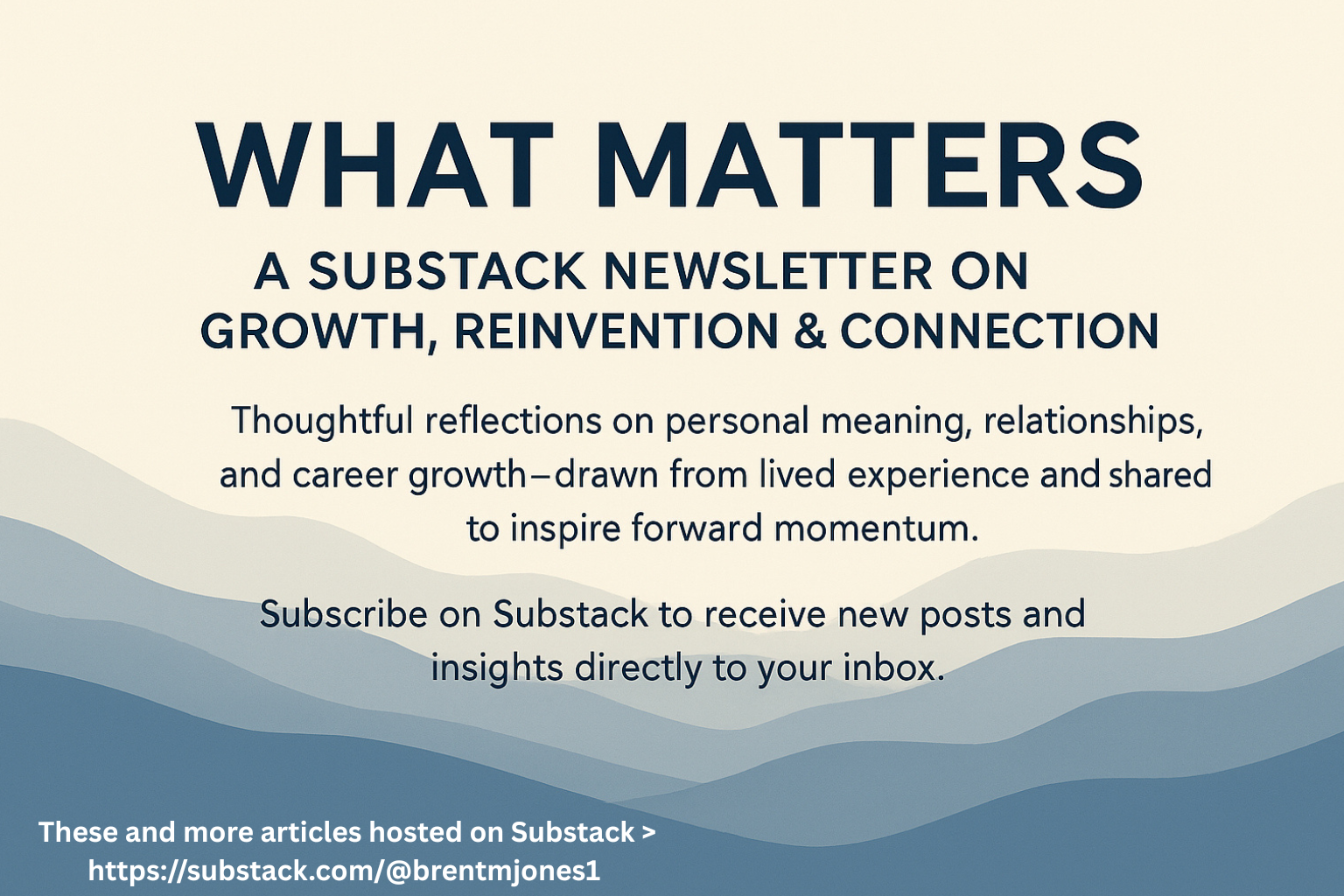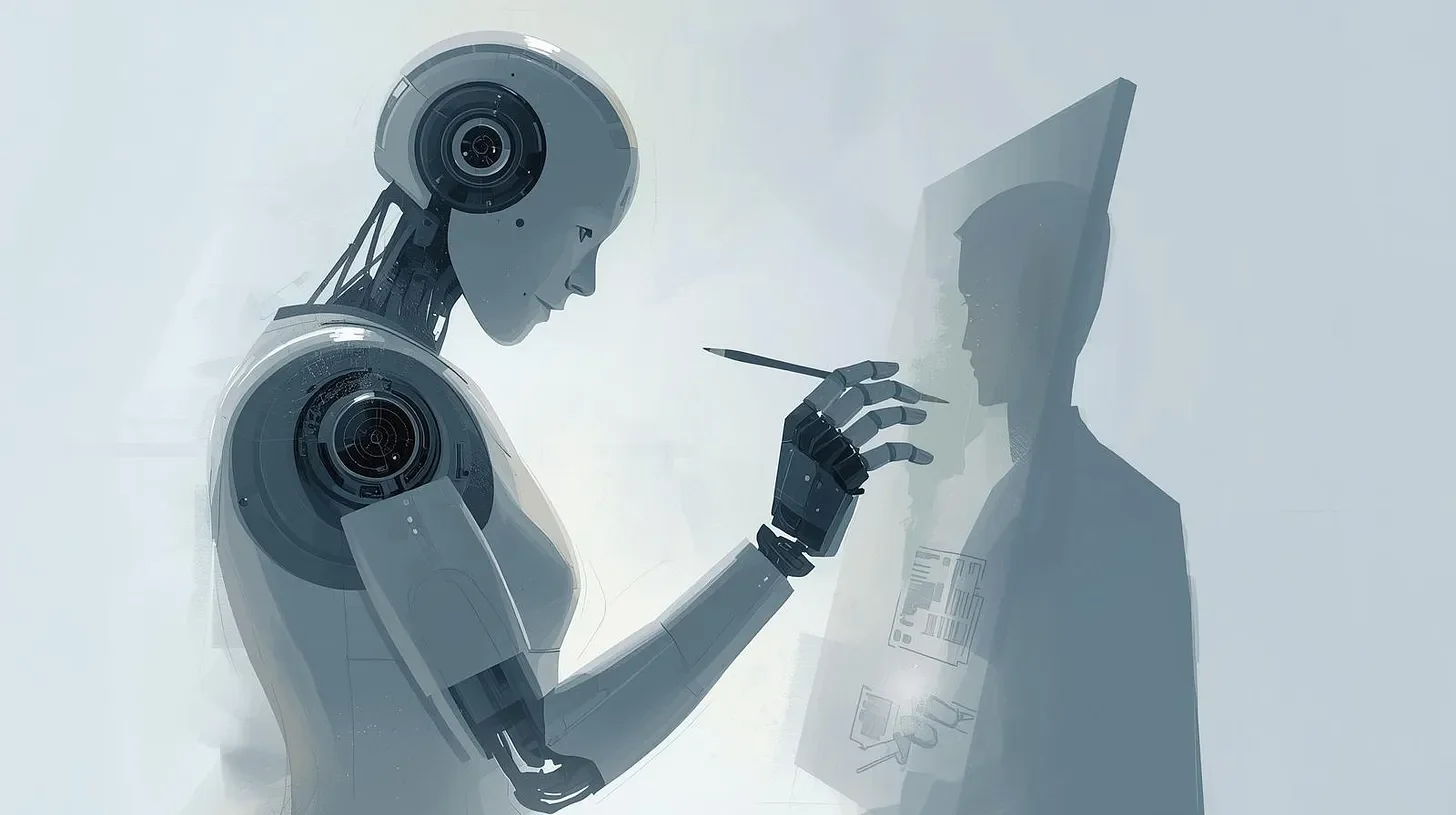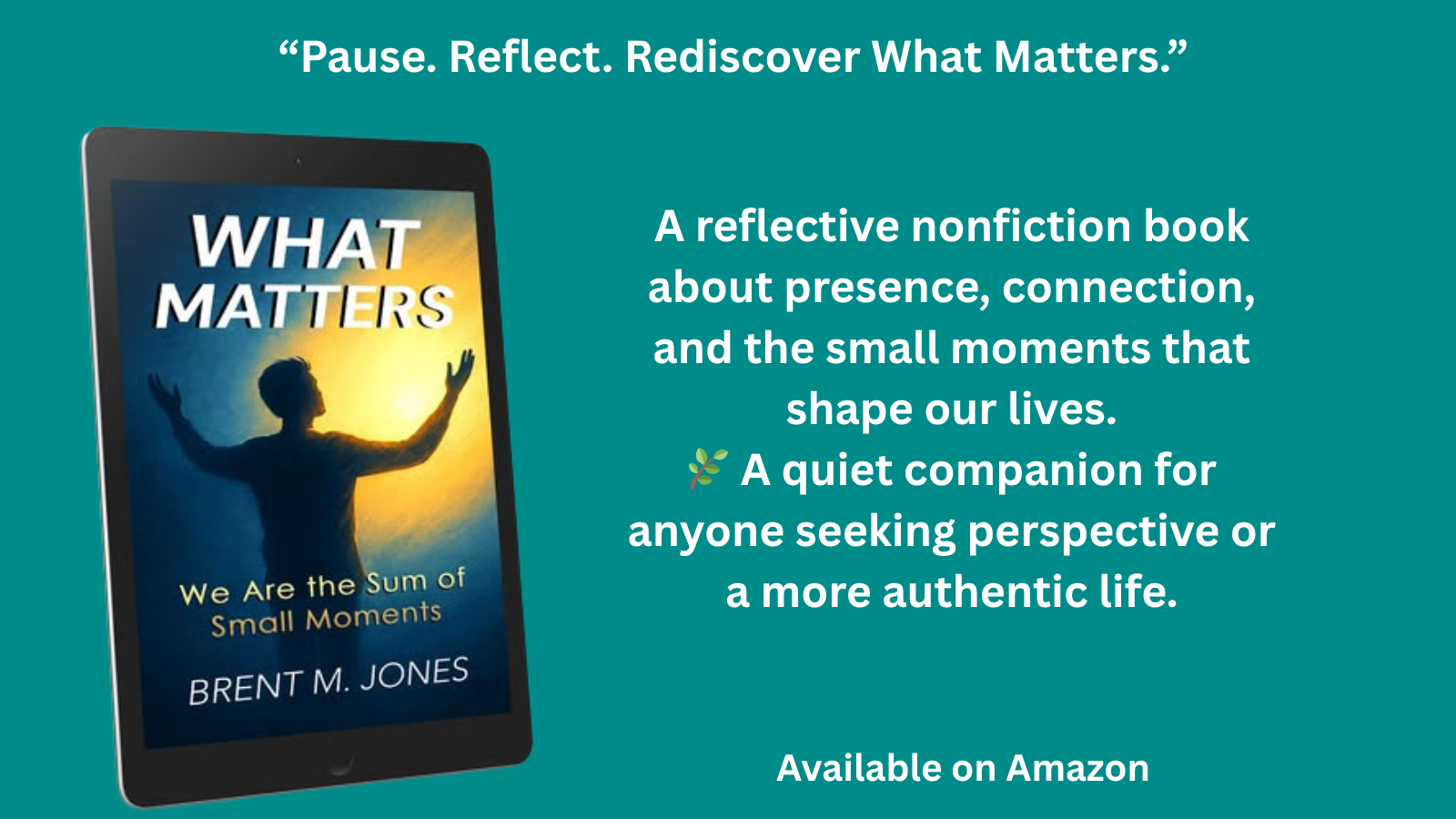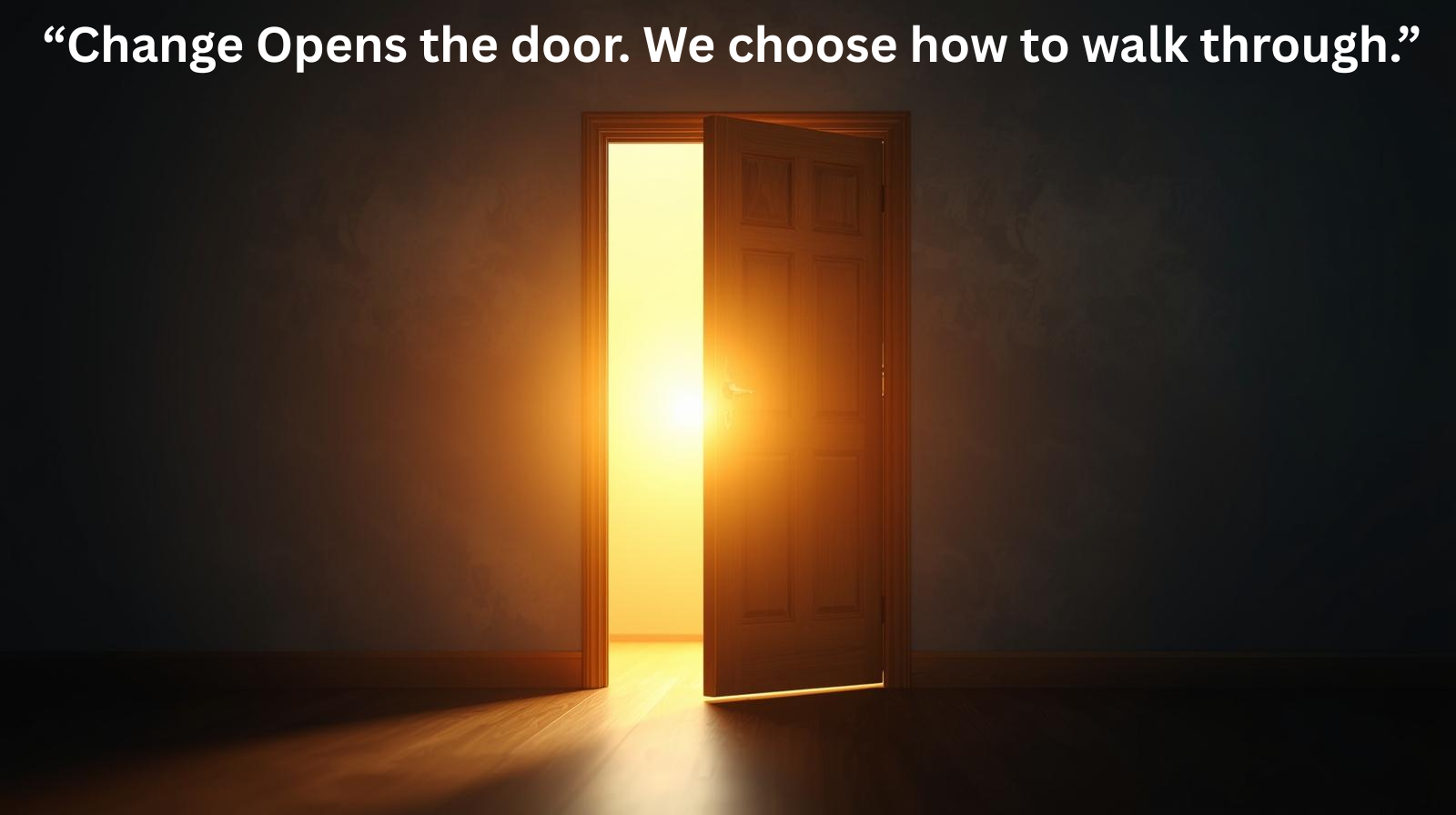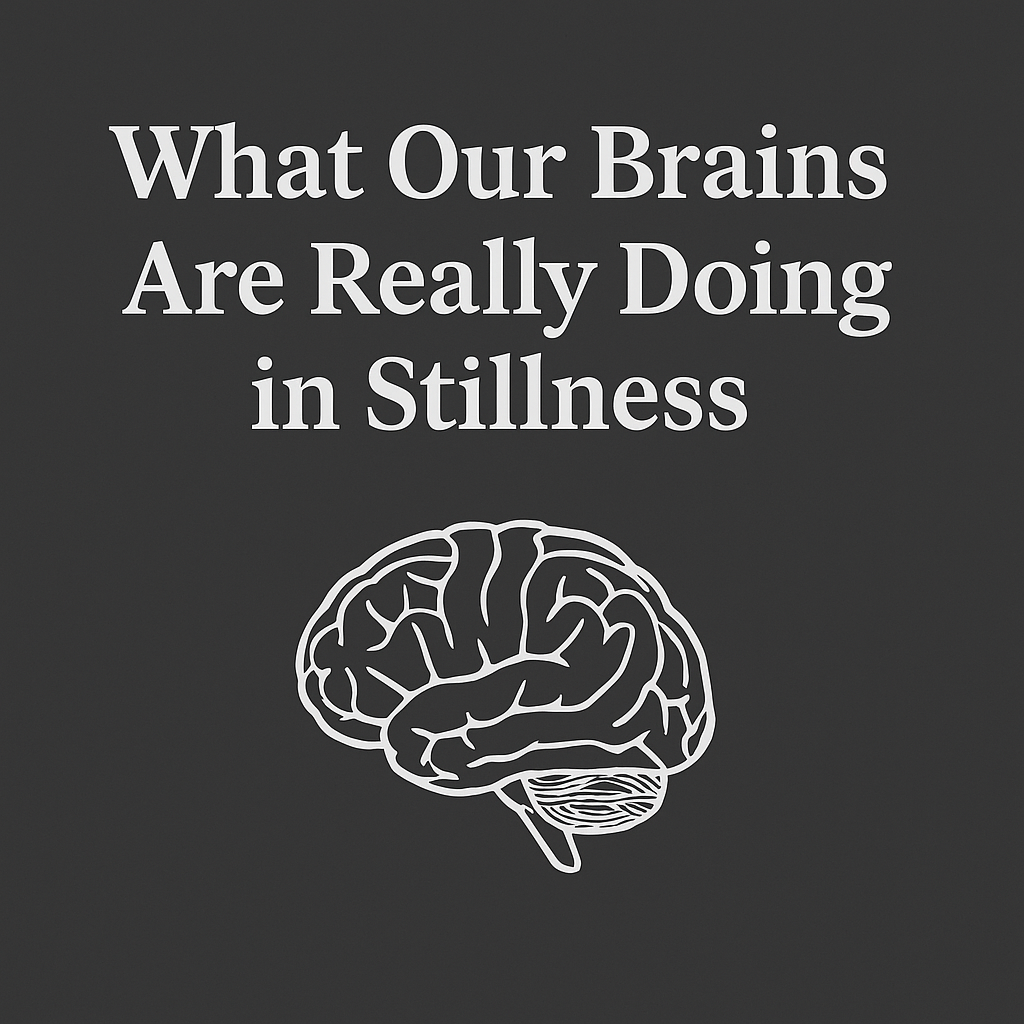Rethinking the Meaning of Life: What We Miss When We Focus on Death
For many people, the meaning of life is tied to what they believe will happen after death. If they expect some form of consciousness to continue, they often assume that clarity will arrive only then—that whatever felt confusing, unfair, or incomplete in this life will make sense in the next.
Others take a different angle. They see meaning as something earned day by day, almost like preparation for whatever comes after. In that view, today matters because it shapes tomorrow, and tomorrow shapes whatever lies beyond it. Life becomes a long rehearsal for a moment we can’t yet see.
But there’s a limitation to both approaches: they pull our thoughts toward death more than life. And when we stare too hard at the unknown, we risk missing the reality that’s right in front of us.
A more grounded, human approach is to look at the life we’re actually living. Not the hypothetical one after it. Not the one we hope we qualify for. This one.
And when you look closely at life as it is — the ordinary days, the people who drift in and out, the moments that shape us — it becomes hard to deny a simple truth:
Life is made of other people.
People who confuse us, frustrate us, and misunderstand us. People who challenge us, surprise us, and sometimes show us who we are when we’re not paying attention. Even the person we might label “the strange one” is navigating the world with their own hopes, their own disappointments, their own questions about how they’re seen.
If that’s true, then maybe the meaning of life isn’t buried in the afterlife at all.
Maybe it isn’t found in preparing for death, but in how we live with others and
in how we show up, how we respond, how we treat the people who cross our path.
Meaning, then, isn’t far away or hidden.
It’s created in the ways we choose to be human with one another.
Peace Begins Where You Pause
Some days don’t ask for progress — only presence. Even in a busy world, peace begins where you pause.
The world moves quickly, measuring worth in motion — steps taken, goals achieved, deadlines met. But stillness has its own kind of progress.
When we stop, we notice what has been waiting quietly for our attention: a thought, a feeling, a truth that movement hides.
Stillness doesn’t mean giving up on momentum. It means remembering that rest is also part of creation. Growth happens not only in doing, but in being.
So take a seat, take a breath, and let the noise pass. You’ll find that peace begins not somewhere distant — but exactly where you pause.
Which Wolf Do You Feed?
(A Reflection for the What Matters Series)
What is it that you love? Which wolf do you feed?
When we love what we do, that love becomes fuel. It feeds our soul, opens the door to creativity, and links our work to something larger than ourselves. Creativity, after all, is a chain—each link formed by what we choose to nurture within us.
The old story of the two wolves captures this truth well. Inside every person, there are two wolves—one good, one bad. The good wolf is patient, kind, curious, and generous. The bad wolf is angry, jealous, and fearful. Whichever wolf we feed becomes stronger.
The bad wolf shuts doors. It tells us to compare, to resent, to stop exploring. The good wolf opens them. It loves to learn, to see beauty in imperfection, and to connect what we know with what we still long to understand.
Amy Tangerine, in A Life You Love, writes about “crafting a life and soul that you love.” That act of crafting begins with awareness: What draws us in? Why do we love what we love?
A writer may love the characters in a story. A painter may love the light on a canvas. When something new—an idea, a feeling, a discovery—joins that love, creativity happens. The work begins to speak back, guiding us toward what we didn’t know we were seeking.
Feed the wolf that listens, learns, and loves. That’s where creativity lives.
The Happiness Found in Serving Others
Happiness often begins with being willing to show appreciation and return kindness. It’s easy to assume that the purpose of life is simply to be happy — yet genuine happiness, the kind that lasts, usually comes through serving others.
When we serve without expectation — not to be seen, rewarded, or remembered, but simply to lessen another person’s burden — we discover a deeper joy. Service shifts attention away from self and toward connection, and in that movement, something changes inside us. We find meaning.
Those who live this way tend to carry less stress, bounce back faster from setbacks, and see their lives through a clearer lens. It isn’t that they avoid difficulty; it’s that service gives their difficulty purpose. The act of helping becomes its own renewal.
Mark Twain said, “The two most important days in your life are the day you are born and the day you find out why.” The “why” often appears not in moments of personal triumph, but in moments when we make someone else’s path easier.
As I wrote in What Matters, happiness is not a destination but a reflection of the small choices that connect us — gratitude, listening, empathy, and purpose. When we choose to serve, we begin to live our “why” each day.
The good life isn’t about what we gather, but what we give — and the understanding that every act of kindness adds meaning to both lives involved.
The Unseen Influence of Integrity: A Reflection for the What Matters Series
(A reflection for the What Matters series)
We often think influence means visibility, followers, recognition, and measurable reach.
But the truth is, the most lasting influence rarely comes from those in the spotlight.
Integrity works quietly.
It’s the calm correction that never makes a headline, the private apology that heals more than it hurts, the choice to stay honest when no one would know otherwise.
You may never see the full effect of doing the right thing.
Still, each moment of decency builds something larger, a shared sense of trust that outlives our names or posts or positions.
What we model in silence becomes the example others follow without even realizing it.
The child who watches patiently. The friend who notices restraint. The colleague who remembers your fairness when it’s their turn to decide.
Integrity’s influence is cumulative, not performative.
It doesn’t ask to be noticed; it simply endures.
So keep choosing honesty when shortcuts tempt you.
Keep showing kindness when cynicism feels easier.
Keep believing that quiet integrity changes more than visible outrage ever could.
Because in the end, what we sustain through our character, even when unseen, becomes the real foundation on which everything else stands
When You Feel Too Small to Matter
(A reflection for the What Matters series)
There are times when the world feels like it’s shifting too fast to steady, when institutions we trusted seem fragile, and good people wonder if anything they do still matters.
It’s easy to feel powerless. You can vote, write, speak, reach out, and still watch the world tilt toward noise, anger, or indifference. You tell yourself: “I’m just one person.”
But that single sentence, I’m just one person, has never told the whole story.
Change rarely begins with power; it begins with conscience. Every conversation grounded in honesty, every act of restraint when others react, every sentence that clarifies rather than inflames, those are the small hinges that move history, even if they don’t make headlines.
You don’t have to fix everything. You just have to remain the kind of person who still believes clarity, kindness, and truth are worth defending, not through shouting, but through example.
Our influence isn’t always visible, but it’s cumulative.
The quiet work of integrity spreads in ways the loudest voices never see.
So write. Speak. Listen. Hold to your values even when you doubt their reach. Because in a world that feels out of control, how we act and communicate may be the only kind of control that truly matters.
“Rommel, You Magnificent Bastard: Why Words Reveal Strategy”
“Rommel, You Magnificent Bastard: Why Words Reveal Strategy”
“Rommel, you magnificent bastard! I read your book!” — General George S. Patton Jr.
General Patton’s famous quip is more than military bravado. It’s a sharp reminder that words reveal strategy. Every speech, book, or article tells the world how you think. Sometimes that works in your favor; other times, it arms your competition.
The truth is, what we say and write always gives us away. Our patterns, priorities, and blind spots leak through. For leaders, professionals, and entrepreneurs, that’s both a risk and an opportunity.
The Risk: Giving Away Your Playbook
When you publish an article, launch a book, or share your story, you aren’t just building your brand—you’re handing others a glimpse into your strategy. Competitors may notice your focus areas. Colleagues might catch weaknesses you didn’t intend to show. Even silence on certain topics tells a story.
That doesn’t mean you should stop writing or speaking. It means you need to be intentional. Decide what message strengthens your credibility and what details should stay behind the curtain.
The Opportunity: Reading Between the Lines
Patton’s edge wasn’t just in reading Rommel’s book—it was in learning how his opponent thought. You can do the same in business and life.
Read your competition’s work. Their blogs, reports, and talks show you where their energy is going.
Notice what’s missing. Absences often reveal as much as statements.
Study their framing. How someone tells their story says a lot about their priorities and fears.
This isn’t about copying. It’s about awareness. When you know why others say what they say, you’re better positioned to anticipate, respond, and lead.
The Magnificent Bastard Mindset
In literature, the “magnificent bastard” archetype is the character who is always one step ahead—clever, strategic, and impossible to outmaneuver. Patton’s quote suggests we can all learn from that mindset. Not by being manipulative, but by staying informed, thinking critically, and preparing before others do.
The Takeaway
Every word you share is a signal. Every word your competition shares is a clue. Use both wisely.
Patton’s lesson is as relevant in boardrooms and LinkedIn feeds as it was on the battlefield: knowledge isn’t just power—it’s positioning.
Question for Readers: How do you “read between the lines” in your industry? Do you actively study your competition—or let them study you?
Change Doesn’t Always Mean Movement
Life teaches us through change. It presents choices, challenges, and transitions that reshape who we are. Change is constant—but it’s a misconception to believe that every shift automatically triggers another.
Some changes are catalysts. They ignite a chain reaction, leading to new habits, new people, new ways of seeing ourselves. A single decision—taking a new job, moving to a different city, ending or beginning a relationship—can spark growth that extends into every corner of our lives. We often celebrate these moments because they feel alive, dynamic, and full of forward motion.
But not all changes are catalysts. Some are conclusions. They don’t set off fireworks; they simply create space. They allow us to adapt, reflect, or breathe. A major life shift doesn’t always demand more movement—sometimes it calls for stability. Sometimes the wisest response is to pause, to rest in the unfamiliar, and to give ourselves the chance to understand what the change has already brought.
A new job, for example, might launch a fresh chapter with new colleagues and new routines. Or it might be the opposite: the job could provide the structure and peace you’ve been missing. The same event—a job change—can mean transformation in one person’s life and much-needed grounding in another’s.
The real lesson is this: change opens the door, but we choose how to walk through it. We decide whether to keep moving, stay still, or settle in. Growth doesn’t always look like acceleration. Sometimes it looks like building roots, letting quiet routines take hold, and learning to be content where we are.
I’ve noticed in my own life that the temptation is to assume one shift requires another. If I’ve changed jobs, maybe I also need to change where I live. If I’ve started a new habit, maybe I need to reinvent my entire routine. But often, the best progress comes from letting a single change breathe—allowing it to stand on its own, without piling on more transitions than I can process.
Change asks something of us, but it doesn’t always ask for more. Sometimes it asks for less. Less urgency. Less striving. Less noise.
So the next time change arrives—whether welcomed or unexpected—pause for a moment. Ask yourself: Is this change calling me forward, or is it inviting me to rest? Do I need to accelerate, or do I need to let the ground settle beneath me?
Because while life teaches us through change, wisdom comes from how we respond.
Why Literature Still Matters
Literature is more than entertainment—it’s a mirror of who we are and a companion on life’s journey. In every story and every poem, we find echoes of our shared humanity.
👉 Read the full reflection on my Substack, and join me there for more poems and thoughts that matter.
👉 Read the full reflection on my website, where you can explore more poems, essays, and books.
"What Our Brains Are Really Doing in Stillness"
In my latest Substack post reflection, I take a closer look at what our brains are really doing in moments of stillness — and how those quiet pauses can open the door to mental clarity, spark creativity, and bring emotional balance.
Do We Need to Fall to Grow?
Do we need to fall to grow? This short poem explores the quiet wisdom found in struggle, recovery, and reflection—where clarity often begins in the fall.
Read moreWhen the Question Finally Surfaces: What Matters Now
Sometimes we don’t notice the shift until we stop long enough to feel it. The pace slows. A question surfaces. Something quietly asks for our attention.
One day, you’re moving through routines, juggling expectations, and doing what seems required. Then—often in a quiet moment, or after something unexpected—you pause and ask:
What really matters right now?
It’s a simple question. And it has a way of rearranging everything once we answer it honestly.
That question sits at the heart of my book, What Matters: Reflections on Reinvention, Relationships, and Being Present in the Moment.
It’s a short book by design. I didn’t want to add to the noise. I wanted to create space—for reflection, for recalibration, for noticing what often gets overlooked.
Why I Wrote This Book
Over the past few years, I’ve watched many people—including myself—move through transitions. Career shifts. Changing relationships. Losses. New beginnings. Through all of it, one pattern kept returning:
We spend a great deal of time chasing success, without always defining what success actually means to us.
What Matters explores how we can:
Reconnect with our values in a world that pulls us in every direction
Recognize the importance of small, meaningful moments
Approach change not as disruption, but as invitation
Let go of outdated stories we tell ourselves
Show up more honestly in the relationships that count
A Small Book for Big Questions
If you’re in a season of reflection, If something in your life feels slightly out of alignment, If you’re simply looking for a quieter way to think about what comes next—
This book was written with you in mind.
You can explore What Matters on Amazon if you’d like to learn more.
And whether through books, essays, or quiet pauses, I believe clarity rarely arrives all at once. It comes slowly. One honest question at a time.
What matters to you right now?
—Brent
The Power of Not Thinking: How Creativity Begins When We Let Go →
July 8, 2025
What if the secret to deeper creativity isn’t thinking harder—but stepping back from thinking altogether?Vincent van Gogh once said, “I paint to stop thinking and to start feeling.” He wasn’t rejecting thought—he was making space for something deeper. This reflection explores how quieting the mind can open the door to more inspired, authentic expression—and why that still matters in today’s world.
Imagine the heartbreak of no longer being able to write, paint, or express yourself creatively. For many, it wouldn’t just be a loss of hobby—it would feel like a loss of identity. Vincent van Gogh once said, “I paint to stop thinking and to start feeling.” That single line captures something profoundly human: the power of art to move us out of our heads and into our hearts.
Van Gogh’s words are more than poetic. They reveal a deep truth—that creativity often begins not with thinking, but with letting go of thought. To stop thinking is not to go blank; it is to make space—for emotion, instinct, and unspoken meaning. When we stop trying to control every idea, we begin to access something more intuitive, something that connects us not only to ourselves but also to the world around us.
🌳 The Stop Thinking Tree
The phrase “to stop thinking” is not about shutting down the mind but about quieting it, gently stepping back from the constant hum of analysis, comparison, and inner chatter. In this quieter space, something unexpected happens: we become more present, more aware, and more emotionally in tune.
It’s a shift from cognition to sensation. From rumination to resonance. From control to connection.
Even when our minds seem still, they’re still at work—just in a different way. They’re listening instead of shouting. They’re observing instead of judging. This is where true creative flow begins: not by forcing ideas, but by allowing them to emerge.
🎨 Opening Sensory Doors
When we let go of overthinking, we open what might be called sensory doors. We become more attuned to light, color, rhythm, and nuance. The words we write feel more alive. The brushstrokes we make carry deeper emotion. Our creative choices become less calculated and more meaningful—because they come from a place beyond logic.
To stop thinking is not to be thoughtless. It’s to make room for feeling. And from feeling comes art.
This is not just a creative method—it’s a way of reconnecting with ourselves. In a world driven by speed and certainty, choosing to pause and feel is a radical act. It’s also, perhaps, the most authentic path to inspiration.
The Quite Strength of Gratitude
Attitude shapes the way we see the world—and the way the world sees us. It’s more than a passing mood; it’s a reflection of our emotions, beliefs, and behavior. A positive attitude doesn’t guarantee ease, but it makes challenges feel more manageable. It helps us stay grounded, connected, and hopeful.
Words Are More Than Just Words: Why How We Say It Still Matters →
Two people can say the same thing, but only one of them is heard. I’ve seen it happen in conversations, meetings, interviews—even in the quiet moments between friends. Someone speaks clearly, and yet the message doesn’t land. Meanwhile, another person uses almost the same words, and suddenly the room shifts. There’s understanding. There’s a connection.
What changed? Not the facts. The difference was in the language.
Words aren’t neutral. They’re not just carriers of data. They carry tone, emotion, intention—and history. Even the simplest phrase comes wrapped in personal experience, shaped by culture and context.
That’s why I believe terminology isn’t just about technical accuracy—it’s about how we connect. It’s not academic. It’s human.
Take a look at the difference between these two questions:
“Can I help you?”
“How can I support you?”
Or these two responses:
“I don’t care.”
“It’s up to you.”
Same surface-level meaning. Totally different emotional effect. One leaves room for agency. The other shuts it down.
We often underestimate how much power these subtle shifts in language hold—not just to express ourselves, but to shape how others feel, respond, and remember what we said.
In relationships, this matters deeply. I’ve had conversations where miscommunication didn’t come from disagreement—it came from different interpretations of the same words. Tone wasn’t the issue. It was terminology.
It turns out that how we speak to others is often how we make space for them. It’s how we say: I see you. I want to understand.
Professionally, the impact is just as real. The way we describe ourselves on LinkedIn, in a résumé, or in a job interview doesn’t just reflect our skills—it signals how we think, what we value, and how clearly we can communicate.
A poorly chosen phrase can diminish a strength. A well-placed word can reframe a whole story.
In a world where attention is fragmented and conversations happen fast, it’s easy to reach for what’s familiar. But slowing down—to think about not just what we’re saying, but how we’re saying it—is a small act of care.
Care for the listener. Care for the relationship. And care for the story we’re telling about who we are.
Because when we speak more intentionally, we’re not just choosing better words.
We’re choosing to be seen.
We’re choosing to be understood.
We’re choosing to connect.
And that still matters.
If this reflection resonates with you, I explore more of these ideas in my book, Terminology Is More Than Words—but this stands on its own as a simple reminder: language isn't just a tool. It’s a bridge.
The Truth in Nonfiction Isn’t Always the Same: On Meaning, Perspective, and Why Communication Still Matters →
We often treat nonfiction as the realm of clarity—facts, truths, lessons. But even in the most well-intentioned writing, something curious happens: each reader walks away with something slightly different. The same sentence might inspire one person and confuse another. A personal story might feel universal to some, but irrelevant to others.
That’s not because the writer failed.
It’s because understanding isn’t fixed. Meaning is shaped by the reader’s own experiences, assumptions, and readiness to receive it. No two people truly read the same book. Even when the words are identical, the interpretation lives in a different place.
This is what makes human communication both fragile and deeply beautiful.
We’re not just sharing information—we’re shaping connection. The power of words isn’t in how precisely they land, but in how honestly they invite others in.
I write books and reflections that try to be helpful. But I know that what someone finds in them might not be what I intended. And that’s okay. Sometimes the value lies in the conversation a sentence sparks, not the sentence itself.
So the next time you find yourself wondering whether what you wrote, said, or shared was understood exactly as you meant it—pause. The fact that it reached someone, and they made meaning of it, is a kind of success we don’t always name.
That’s the quiet miracle of communication: it may not always be exact, but it’s still connection.
The Fragile Beauty of Being Understood →
Why Meaning Isn’t Fixed—and Why That’s What Makes Communication Human
We often speak as if communication is simple: say what you mean, and others will understand.
But the truth is more complex—and more human.
Even in nonfiction, no two people read the same sentence the same way. Experience, emotion, and perspective shape how meaning is received. That’s not a flaw in communication—that’s the beauty of it.
It means that understanding isn’t fixed. The words you speak or write may be clear in your mind, but they’re interpreted through someone else’s lens—through their story, their mood, their readiness to receive.
And that’s what makes human communication both fragile and deeply beautiful.
Because when someone does understand you—when your words, shaped by your experience, are received by someone else in a way that moves them—that’s not just communication. That’s connection.
It reminds us that words are not just tools; they’re bridges.
That listening isn’t passive; it’s an act of empathy.
That saying something well doesn’t guarantee being understood—but saying it honestly increases the chance you will be.
This doesn’t mean we should stop trying to be clear. It means we should try to be present.
To listen as well as we speak.
To ask, not just “Did I say it right?”—but “Did they hear it the way I meant?”
We don’t need perfect understanding to feel understood.
Sometimes, we just need the effort.
And that, too, is what makes communication matter.
When Knowing Too Much Slows You Down: The Entrepreneur’s Double-Edged Sword →
We often think that the more an entrepreneur knows about their product, the better. But what if deep knowledge starts to become a bottleneck? In this piece, I explore how knowing too much can hinder innovation, delay launches, and lead to burnout—and how to strike a healthier balance between expertise and momentum.
For entrepreneurs, deep knowledge about a product or opportunity is often seen as a strength—a competitive edge that separates those who succeed from those who stumble. After all, understanding every angle of a product—its design, functionality, market fit, and customer pain points—enables sharper decisions across everything from marketing to customer support. But this same advantage can quickly become a liability if not managed wisely.
In entrepreneurship, knowing everything doesn’t always mean doing everything right. In fact, the pursuit of total understanding can inadvertently lead to stagnation, tunnel vision, or delayed launches.
The Advantage of Deep Knowledge
At its best, comprehensive knowledge empowers entrepreneurs to:
Design smarter by aligning the product with real-world needs
Communicate clearly by speaking directly to customer pain points
Market effectively by differentiating based on true product strengths
Support customers with confidence by anticipating and solving problems
This hands-on, all-in approach is especially powerful for early-stage ventures where founders wear many hats. It builds credibility, tightens execution, and helps reduce costly missteps.
Moreover, entrepreneurs who immerse themselves in the full product experience are closer to the ground—they understand the customer because they’ve walked through the product as both creator and user. This proximity to the market is often what allows entrepreneurs to iterate quickly, personalize service, and outmaneuver larger competitors who rely on layers of abstraction and assumptions.
The Hidden Downsides
However, the very trait that helps founders thrive—intense curiosity and a desire to master every detail—can also hold them back.
Here’s how:
Innovation Blind Spots When entrepreneurs become too deeply entrenched in a specific way of thinking about the product, they risk missing new angles. Their knowledge, while vast, can become a filter—blinding them to opportunities that a fresh perspective might uncover. In some cases, being too close to the product makes it harder to adapt or pivot.
Paralysis by Analysis The desire to “fully understand everything” can delay decision-making. Instead of launching with a minimum viable product (MVP), some founders spend excessive time learning, tweaking, or optimizing—waiting for the mythical “perfect version” to emerge. Unfortunately, this perfectionism can stall momentum and cost critical time in the market.
Burnout and Bottlenecks Trying to learn or control every piece of the puzzle also leads to overwhelm. Entrepreneurs who micromanage every aspect can become the bottleneck in their own company’s growth. Delegation becomes difficult, not because of lack of talent, but because of a reluctance to let go.
Balance: The Real Competitive Advantage
The key is not to stop learning—but to learn strategically. Entrepreneurs must recognize when their depth of knowledge adds value and when it creates drag.
Some questions to help navigate that line:
Am I delaying progress in the name of learning?
Could someone else contribute fresh insight I might be missing?
Is my deep involvement improving outcomes, or just maintaining control?
Smart entrepreneurs know that the goal is not to be the smartest person in the room, but to build a team, a product, and a system that works without them needing to master every detail.
In Summary
Entrepreneurs who understand every aspect of their product are better positioned to launch with clarity and serve with excellence. But when knowledge turns into over-involvement, or curiosity becomes a crutch for delay, it’s time to step back and reassess.
Understanding is power—but progress requires letting go, trusting others, and allowing space for the unexpected
“Have you ever delayed action because you wanted to know everything first? Share your thoughts in the comments.”
#Entrepreneurship #StartupMindset #ProductDevelopment #Leadership #FounderTips
Finding a Career That Fits:Why Your Skills and Joy Matter →
"Want a job that actually fits? Discover how aligning your strengths and passions can help you find more fulfilling work—and why self-awareness is your best tool in today’s job market."
Read more
